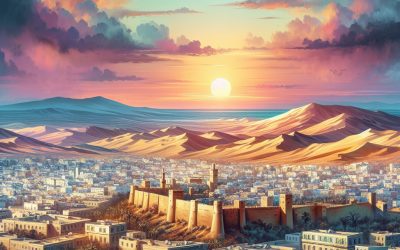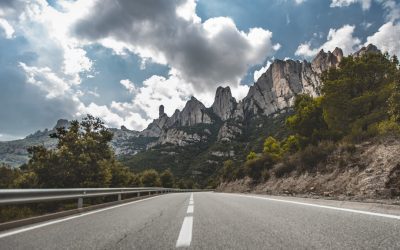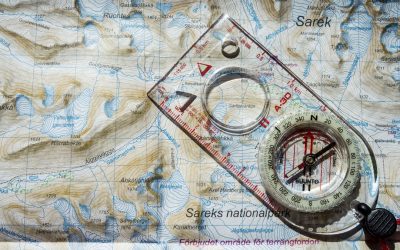World Geography
Geography is the study of the Earth’s landscapes, environments, and the relationships between people and their surroundings. It encompasses both the physical aspects of the Earth, such as its landforms, bodies of water, and climate, as well as the human aspects, including population distribution, cultures, and economies. World geography is a broad field that seeks to understand the complexities of our planet and how humans interact with it. By studying world geography, we can gain a deeper appreciation for the diversity of our planet and the interconnectedness of its various regions.
Geography is a multidisciplinary field that draws on elements of physical science, social science, and humanities. It involves the use of maps, spatial analysis, and geographic information systems (GIS) to understand the Earth’s surface and the processes that shape it. World geography also encompasses the study of human geography, which examines the ways in which people and their activities are distributed across the Earth. By understanding world geography, we can better appreciate the environmental, cultural, and economic challenges facing different regions of the world. This knowledge is crucial for addressing global issues such as climate change, resource management, and international development.
The Five Oceans and Seven Continents
The Earth’s surface is divided into five major oceans: the Pacific, Atlantic, Indian, Southern (or Antarctic), and Arctic Oceans. These vast bodies of water play a crucial role in regulating the Earth’s climate and supporting diverse marine ecosystems. The oceans also serve as important transportation routes and a source of food and other natural resources for human societies around the world.
In addition to the oceans, the Earth’s landmasses are divided into seven continents: Africa, Antarctica, Asia, Europe, North America, Australia (or Oceania), and South America. Each continent has its own unique physical and cultural characteristics, shaped by millions of years of geological processes and human history. From the deserts of Africa to the rainforests of South America, the continents offer a rich tapestry of landscapes and environments for exploration and study.
Major Mountain Ranges and Deserts
The Earth’s surface is also marked by major mountain ranges and deserts that have shaped the planet’s physical and cultural landscapes. The Himalayas, for example, are the highest mountain range in the world and are home to diverse ecosystems and cultures in countries such as India, Nepal, and Bhutan. The Andes in South America, the Rockies in North America, and the Alps in Europe are other prominent mountain ranges that have influenced human settlement patterns and economic activities.
Deserts cover about one-third of the Earth’s land surface and are characterized by low precipitation and extreme temperatures. The Sahara Desert in Africa is the largest hot desert in the world, while the Gobi Desert in Asia is one of the largest cold deserts. Deserts are not only home to unique flora and fauna but have also been important trade routes and cultural crossroads throughout history.
Climate Zones and Biomes
The Earth’s climate is influenced by a variety of factors, including latitude, altitude, ocean currents, and prevailing winds. As a result, the planet is divided into different climate zones, each with its own characteristic weather patterns and ecosystems. The equator, for example, experiences a tropical climate with high temperatures and heavy rainfall, while the polar regions have a cold and dry climate.
These climate zones give rise to different biomes, or large ecological areas characterized by distinct plant and animal communities. The tropical rainforest biome, found near the equator, is home to a diverse array of species and is vital for regulating the Earth’s climate. The grasslands biome, found in regions such as the African savannah and North American prairies, supports grazing animals and has been important for human agriculture throughout history.
Human Geography and Population Distribution
Human geography examines the ways in which people and their activities are distributed across the Earth’s surface. It encompasses topics such as population growth, migration patterns, urbanization, and cultural diversity. Understanding human geography is crucial for addressing global challenges such as poverty, inequality, and environmental degradation.
Population distribution is uneven across the world, with some regions experiencing rapid population growth while others are declining. The majority of the world’s population lives in Asia, particularly in countries such as China and India. Urban areas are also growing rapidly, with more than half of the world’s population now living in cities. This trend has significant implications for infrastructure development, resource management, and social inequality.
Historical and Cultural Geography
Historical geography examines how human activities have shaped the Earth’s landscapes over time. It explores topics such as colonialism, trade routes, and the rise and fall of empires. Cultural geography focuses on how human cultures have developed in different regions of the world and how they interact with their environments.
The Silk Road, for example, was an ancient trade route that connected China with Europe and facilitated the exchange of goods, ideas, and technologies across Eurasia. This historical trade route had a profound impact on the development of cultures and economies along its path. Similarly, cultural geographers study how different societies have adapted to their environments through practices such as agriculture, architecture, and religious beliefs.
The Importance of Geographic Knowledge
Geographic knowledge is crucial for addressing global challenges such as climate change, resource management, and international development. By understanding world geography, we can better appreciate the environmental, cultural, and economic challenges facing different regions of the world. This knowledge is crucial for addressing global issues such as climate change, resource management, and international development.
Geographic knowledge also helps us to understand our interconnectedness with other regions of the world. By studying world geography, we can gain a deeper appreciation for the diversity of our planet and the interconnectedness of its various regions. This understanding can foster a sense of global citizenship and empathy for people from different cultures and backgrounds.
In conclusion, world geography is a complex and multifaceted field that encompasses both physical and human aspects of the Earth’s landscapes. By studying world geography, we can gain a deeper appreciation for the diversity of our planet and the interconnectedness of its various regions. This knowledge is crucial for addressing global challenges such as climate change, resource management, and international development. It also helps us to understand our interconnectedness with other regions of the world and fosters a sense of global citizenship.
FAQs
What is world geography?
World geography is the study of the Earth’s landscapes, environments, and the relationships between people and their environments. It encompasses the physical features of the Earth, as well as the human activity that takes place on it.
Why is world geography important?
World geography is important because it helps us understand the world around us. It provides insights into the physical and human processes that shape our planet, and helps us make informed decisions about how to interact with our environment.
What are the main branches of world geography?
The main branches of world geography include physical geography, which focuses on the Earth’s natural features and processes, and human geography, which examines the relationships between people and their environments.
How does world geography impact our daily lives?
World geography impacts our daily lives in numerous ways, from influencing the weather and climate we experience, to shaping the availability of natural resources and influencing the distribution of populations and cultures around the world.
What are some key concepts in world geography?
Key concepts in world geography include location, place, human-environment interaction, movement, and region. These concepts help geographers understand and interpret the world around them.
Cultural or Historical Sites of United Kingdom: Important Cultural Landmarks or Historical Sites In United Kingdom
Stonehenge, located on the Salisbury Plain in Wiltshire, England, stands as one of the most iconic and enigmatic prehistoric monuments in the world. This ancient structure, composed of a ring of standing stones, each around 4 metres high and weighing approximately 25 tons, has puzzled historians, archaeologists, and visitors alike for centuries. The construction of Stonehenge is believed to have begun around 3000 BC, with the site evolving over the millennia into the form we recognise today. The precise purpose of Stonehenge remains a topic of debate; theories range from it being an astronomical observatory to a ceremonial site for ancient rituals. The alignment of the stones with the movements of the sun is particularly striking. During the summer solstice, the sun rises directly above the Heel Stone, casting its first rays into the heart of the monument. This phenomenon suggests that the builders possessed advanced knowledge of astronomy and celestial events. Excavations around the site have revealed burial mounds and artefacts, indicating that Stonehenge may have served as a place of worship or a burial ground for important individuals. The mystery surrounding its construction techniques also captivates researchers; how did prehistoric people transport such massive stones from as far away as Wales? Theories abound, but no definitive answers have been found, adding to the allure of this ancient site. Summary Stonehenge is a mysterious prehistoric monument with unknown origins and purpose, making it a fascinating archaeological site. Buckingham Palace serves as the official residence of the British monarch and is a symbol of the British monarchy and its traditions. The Tower of London has a rich history as...
Cultural or Historical Sites of Tunisia: Important Cultural Landmarks or Historical Sites In Tunisia
Carthage, once a formidable power in the ancient Mediterranean, is a site steeped in history and intrigue. Founded by the Phoenicians in the 9th century BCE, it became a thriving hub of trade and culture, rivaling even Rome at its zenith. The city was strategically located on the coast of present-day Tunisia, allowing it to control maritime routes and establish a vast trading empire that extended across the Mediterranean. The wealth generated from trade enabled Carthage to develop into a sophisticated urban centre, complete with impressive architecture, advanced agricultural techniques, and a complex social structure. The ruins of Carthage today offer a glimpse into its glorious past. Visitors can explore the remnants of the Punic ports, where ships once docked laden with goods from distant lands. The Tophet, a sacred burial ground for children, reveals the religious practices of the Carthaginians, who worshipped deities such as Baal and Tanit. The impressive Antonine Baths, built during the Roman period, showcase the architectural prowess of the time, featuring intricate mosaics and expansive bathing complexes. As one wanders through the archaeological site, it becomes evident that Carthage was not merely a city but a symbol of resilience and cultural exchange that shaped the course of history. Summary Carthage was a powerful ancient city known for its strategic location and rich history. The Medina of Tunis is a UNESCO World Heritage site and one of the best-preserved Islamic cities in the world. The Amphitheatre of El Jem is a well-preserved Roman amphitheatre and a testament to the ancient city’s grandeur. The Kairouan Mosque is one of the most important Islamic monuments in North...
Natural Resources of Tunisia: Where Natural Resources are Located in Tunisia
Tunisia, a North African nation bordered by the Mediterranean Sea, is endowed with a diverse array of natural resources that play a crucial role in its economy and development. The country’s geographical position, coupled with its varied climate, has resulted in a rich tapestry of natural assets, including minerals, hydrocarbons, agricultural land, and renewable energy potential. The effective management and sustainable utilisation of these resources are vital...
Political Boundaries of Tunisia: Provinces, Districts, or Historical Boundaries.
Political boundaries serve as the framework within which a nation operates, delineating areas of governance, administration, and jurisdiction. In Tunisia, a country located in North Africa, these boundaries have been shaped by a complex interplay of historical, cultural, and political factors. The geographical positioning of Tunisia, bordered by the Mediterranean Sea to the north and east, and sharing land borders with Algeria and Libya, has significantly influenced its political landscape. The establishment of political boundaries in Tunisia is not merely a matter of geography; it reflects the historical legacies of colonialism, the struggles for independence, and the ongoing quest for national identity. The significance of political boundaries in Tunisia extends beyond mere lines on a map. They are instrumental in defining the relationship between the state and its citizens, impacting everything from resource allocation to representation in government. As Tunisia navigates its post-revolutionary landscape, understanding the evolution and implications of these boundaries becomes crucial for comprehending the current political climate and the challenges that lie ahead. The intricate tapestry of Tunisia’s political boundaries is woven with threads of history, culture, and socio-economic factors that continue to shape its governance and development. Summary Tunisia is divided into 24 provinces, each with its own administrative structure and local government. The historical boundaries of Tunisia have had a significant influence on modern politics, shaping the country’s governance and development. The evolution of political boundaries in Tunisia has been marked by challenges and controversies, reflecting the complex nature of the country’s political landscape. The impact of political boundaries on governance and development in Tunisia is significant, with implications for local government and administrative...
Terrain and Topography of Tunisia: mountains, valleys, and plains.
Tunisia, a North African nation, boasts a diverse and captivating landscape that reflects its rich geological history and climatic variations. The country’s terrain is a tapestry woven from mountains, valleys, plains, and deserts, each contributing to the unique ecological and cultural fabric of the region. Spanning approximately 163,610 square...
History of Tunisia
The history of Tunisia is deeply intertwined with the legacy of the Carthaginian Empire, which emerged as a dominant power in the western Mediterranean during the first millennium BCE. Founded by Phoenician settlers from Tyre around 814 BCE, Carthage quickly evolved into a thriving city-state, renowned for its maritime prowess and extensive trade networks. The Carthaginians established colonies across North Africa, Sicily, Sardinia, and even parts of Spain, facilitating a rich exchange of goods, culture, and ideas. Their economy was bolstered by agriculture, particularly the cultivation of olives and grains, which were exported throughout the Mediterranean. Carthage’s political structure was sophisticated, featuring a complex system of governance that included elected officials and a council of elders. The city-state was ruled by a series of powerful generals and statesmen, with figures like Hamilcar Barca and his son Hannibal becoming legendary for their military strategies. Hannibal’s audacious crossing of the Alps during the Second Punic War (218-201 BCE) remains one of the most celebrated military feats in history. Despite their initial successes against Rome, the Carthaginians ultimately succumbed to Roman forces in 146 BCE, leading to the city’s destruction and marking the end of Carthaginian dominance in the region. Summary Carthage was the capital of the ancient Carthaginian Empire, known for its powerful navy and trade network. Roman rule brought prosperity to Tunisia, with impressive ruins such as the amphitheatre in El Djem still standing today. The Islamic conquest in the 7th century led to the establishment of the Berber dynasties, shaping Tunisia’s culture and architecture. Ottoman rule and the Barbary Coast saw Tunisia become a major hub for piracy and...
Population Density of Tunisia
Population density is a critical demographic metric that reflects the number of individuals living per unit area, typically expressed in persons per square kilometre. It serves as a vital indicator of how populated a region is and can significantly influence various socio-economic factors, including resource allocation, urban planning, and environmental sustainability. In Tunisia, a country located in North Africa, population density varies considerably across its regions, shaped by historical, geographical, and socio-economic factors. Understanding the nuances of population density in Tunisia is essential for grasping the broader implications for development, governance, and social cohesion. The concept of population density is not merely a statistical figure; it encapsulates the dynamics of human settlement and interaction with the environment. In Tunisia, where the Mediterranean coastline attracts a significant portion of the population, the distribution of people is uneven. Urban areas tend to be densely populated due to economic opportunities and better access to services, while rural regions often experience lower density levels. This disparity raises important questions about resource management, infrastructure development, and the overall quality of life for residents in both urban and rural settings. Summary Population density refers to the number of people living per square kilometre and is a key indicator of urbanisation and development. Factors affecting population density in Tunisia include natural resources, economic opportunities, and government policies. Urban areas in Tunisia have higher population density compared to rural areas due to better access to services and employment opportunities. Major cities like Tunis and Sfax have the highest population density in Tunisia, leading to increased pressure on infrastructure and services. High population density in Tunisia poses challenges...
Climate Zones of Tunisia: Different Climate Regions Of Tunisia
Tunisia, a North African nation bordered by the Mediterranean Sea to the north and east, is characterised by a diverse range of climate zones that significantly influence its ecology, agriculture, and tourism. The geographical positioning of Tunisia, along with its varied topography, creates a mosaic of climatic conditions that range from the humid Mediterranean in the north to the arid desert in the south. This climatic diversity not only shapes the natural landscape but also plays a crucial role in determining the livelihoods of its inhabitants and the types of crops that can be cultivated. The climate zones in Tunisia can be broadly categorised into several distinct types: the Mediterranean climate zone, the desert climate zone, the semi-arid climate zone, the mountainous climate zone, the coastal climate zone, and the steppe climate zone. Each of these zones exhibits unique characteristics that affect local weather patterns, vegetation, and human activities. Understanding these climate zones is essential for comprehending how they impact agriculture, tourism, and overall economic development in Tunisia. Summary Tunisia has a diverse range of climate zones, each with its own unique characteristics and challenges. The Mediterranean climate zone in Tunisia is characterized by mild, wet winters and hot, dry summers, making it ideal for agriculture and tourism. The desert climate zone in Tunisia experiences extremely high temperatures and very low rainfall, posing challenges for agriculture and tourism development. The semi-arid climate zone in Tunisia has limited rainfall and high temperatures, making it suitable for certain types of agriculture and tourism activities. The mountainous climate zone in Tunisia has cooler temperatures and higher rainfall, providing opportunities for unique agriculture...
Tunisia
Tunisia, a North African nation bordered by the Mediterranean Sea, is a country rich in history, culture, and natural beauty.
Climate Zones of Togo: Exploring Togo’s Diverse Climates
Togo, a small West African nation, is characterised by a diverse range of climate zones that contribute to its rich biodiversity and agricultural potential. Stretching from the Atlantic coast in the south to the northern savannah regions, Togo‘s climate is influenced by its geographical position, topography, and the seasonal movements of the Intertropical Convergence Zone (ITCZ). This convergence zone plays a pivotal role in determining the rainfall patterns and temperature variations across the country. As a result, Togo experiences a variety of climatic conditions that range from humid tropical climates to semi-arid zones, each supporting distinct ecosystems and livelihoods. The climate of Togo can be broadly categorised into five main zones: coastal, savannah, mountain, semi-arid, and tropical rainforest. Each of these zones presents unique characteristics that not only shape the environment but also influence the socio-economic activities of the local populations. Understanding these climate zones is essential for appreciating Togo’s ecological diversity and the challenges posed by climate change. The interplay between these climatic conditions and human activities has significant implications for agriculture, wildlife conservation, and overall sustainability in the region. Summary Togo’s climate zones range from coastal to semi-arid, each with its own unique characteristics and impact on the environment. The coastal climate in Togo offers a tropical paradise with warm temperatures, high humidity, and lush vegetation, making it a popular tourist destination. Togo’s savannah climate is characterized by vast grasslands and a distinct dry season, providing a unique landscape for exploration and wildlife observation. The mountain climate in Togo brings cooler temperatures and higher rainfall, creating a refreshing escape from the heat of the lowlands. Togo’s semi-arid...
Exploring Togo’s Diverse Terrain: Mountains, Valleys, and Plains
Togo, a small West African nation, is often overshadowed by its larger neighbours, yet it boasts an astonishingly diverse terrain that captivates both locals and visitors alike. Stretching approximately 56,785 square kilometres, Togo‘s geography is a tapestry of mountains, valleys, plains, and coastal regions, each contributing to the country’s unique ecological and cultural landscape. The nation’s varied topography not only supports a rich biodiversity but also influences the lifestyles and traditions of its inhabitants. From the lush greenery of the hills in the north to the sandy beaches along the coast, Togo’s terrain is a reflection of its climatic zones and geological history. The geographical diversity of Togo is further enhanced by its climatic variations, which range from tropical in the south to savannah in the north. This climatic dichotomy fosters a wide array of flora and fauna, making Togo a microcosm of West African biodiversity. The country’s terrain is not merely a backdrop; it plays a crucial role in shaping the agricultural practices, economic activities, and cultural expressions of its people. As we delve deeper into Togo’s majestic mountains, serene valleys, and vast plains, we will uncover the intricate relationship between the land and its inhabitants, revealing how this small nation encapsulates the essence of West Africa’s natural beauty. Summary Togo’s diverse terrain includes majestic mountains, serene valleys, and vast plains, offering a range of natural beauty to explore. The majestic mountains of Togo provide stunning views and opportunities for hiking and adventure. The serene valleys of Togo offer peaceful and picturesque landscapes, perfect for relaxation and nature appreciation. The vast plains of Togo are home to diverse...
Exploring Togo’s Political Boundaries: Provinces, Districts, and Historical Divisions
Togo, a small West African nation bordered by Ghana to the west, Benin to the east, and Burkina Faso to the north, has a complex political landscape shaped by its geographical and historical context. The country spans approximately 56,785 square kilometres and is characterised by a narrow strip of land that extends from the Gulf of Guinea in the south to the northern savannah regions. Togo‘s political boundaries are not merely lines on a map; they represent a tapestry of ethnic diversity, colonial legacies, and contemporary governance challenges. Understanding these boundaries is crucial for comprehending the dynamics of power, identity, and resource distribution within the nation. The political boundaries of Togo have evolved over time, influenced by colonial rule, post-independence governance, and ongoing socio-political changes. The delineation of these boundaries has significant implications for the administration of the country, affecting everything from local governance to national policy-making. As Togo navigates its path towards greater stability and development, the examination of its political boundaries reveals insights into the challenges and opportunities that lie ahead for this vibrant yet complex nation. Summary Togo’s political boundaries are defined by its borders with Ghana, Benin, and Burkina Faso, and have evolved over time due to historical and geopolitical factors. The country is divided into five regions, which are further subdivided into 30 prefectures and one commune, each with its own administrative and political structure. Historical divisions, such as the separation of the north and south during colonial rule, have had a lasting impact on Togo’s political landscape, contributing to regional disparities and tensions. Traditional authorities, including chiefs and kings, play a significant role...











